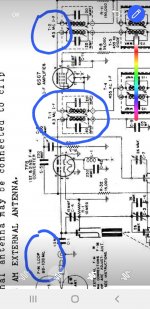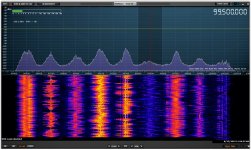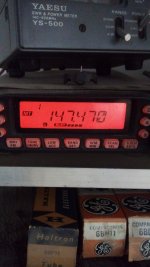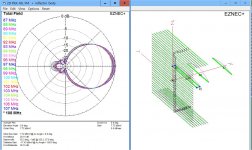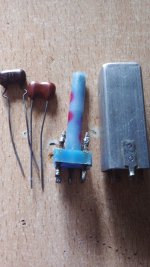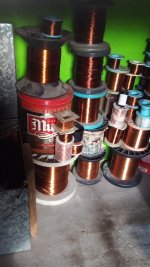There are lots of valuable info in USPatents thanks to Sir Google. Take a look for example a patent from Alda Bedford about 50's regarding blocking oscillator operation. Don't remember the #; but it is the juicimost data about it that no book explain in such deep of details. It is surpricing really, a real luxury.
Patents are meant to make $$$ for the corporation(s) having invested in the research. From that perspective they're never the best possible technical solution (certainly not for DIYers and dedicated hobbyists striving at perfection of their creations) but mostly, the cheapest.There are lots of valuable info in USPatents thanks to Sir Google. Take a look for example a patent from Alda Bedford about 50's regarding blocking oscillator operation. Don't remember the #; but it is the juicimost data about it that no book explain in such deep of details. It is surpricing really, a real luxury.
This's an extension of the previous schematic when I unvoluntary omited the zero center meter for proper tuning with the aid of an 6J6 and some passive components, and a S-meter or Field Strenght Meter hooked as load of the first limiter, and it its indication is directly proportional to signal as there isn't a DC loop gain or AGC at the present. The Zero center meter was from a vintage discarded industrial thermometers (The instrument gave the difference between setpoint and actual temp only) and the S-meter is a microammeter from old double cassette player. No idea of the characteristics of both of them by the moment.
Attachments
Interesting to see that in case the diode discriminator wouldn't perform well enough, it would be fairly easy to rewire for the enneode 6BE7 or (miniature 7 pin socket) gated beam 6BN6 which presently is rather cheap, and both (better) alternatives would provide sufficient output to omit the AF amp.
No, even with semiconductors it isn't a good idea. Although an oscillator can be made to synchronize in a required frequency span, the current through the device in that span is far from linear (according to what I measured, long ago). With tubes the best guess would be a 2 anode beam deflection device like 7360 functioning as VCO plus multiplier, signal to the deflection plates (simple but effective PLL). But in theory any penta (and+) grid tube could be used in a synchronized oscillator, and then measure the response.
That linearity (of output of synchronized oscillators) hasn't been solved indirectly could be concluded from https://patents.google.com/patent/US2440073A/en
That linearity (of output of synchronized oscillators) hasn't been solved indirectly could be concluded from https://patents.google.com/patent/US2440073A/en
A low IF makes sense: higher stage gain and less instability plus better performing demodulators. The cost is that of better preselction at the tuner section but that offers better NF so higher sensitivity. I was quite happy with down-conversion to 350 KHz but recently discovered an advantage of high IF: demodulation of the strongest of two signals when the ratio between them is >=1.005 so back to the drawing board...
Low IF receivers work fine when you have an I/Q receiver, that is, a complex-valued LO signal and IF path: essentially two LO signals 90 degrees out of phase and two IF paths, one for the real and one for the imaginary part, that are combined in a complex IF filter. The IF filter can then filter off the image, provided the two paths match very well and the phase difference between the real and imaginary LO signals is very accurately 90 degrees. It is used quite often in receiver ICs, but I think it is completely impractical with valves.
Some of my SDRs offer FM stereo, including the choice between LIF and ZIF (Low and Zero IF) and the latter works even better. Sensitivity compared to standard technology is OK but in fringe areas like here it's not nearly good enough (much empty space on the band). According to the SDRs some stations would need a 350 KHz demodulation bandwidth which might be the case for Osvaldo too (pirate stations). A circuit for variable bandwidth with tubes does exist and though a bit complicated, feasible. I'll work it out for semiconductors.
https://patents.google.com/patent/US4262361A/en
https://patents.google.com/patent/US4262361A/en
Resembles the dual conversion receivers, but with fixed and VFO interchanged.
I really don't know if effectivelly some of my close stations are pirate, but here it is quite common and many pirate or legal stations very near home. And worse is the music they plays: cumbia villera (no translation here) and regaeton.
I really don't know if effectivelly some of my close stations are pirate, but here it is quite common and many pirate or legal stations very near home. And worse is the music they plays: cumbia villera (no translation here) and regaeton.
When the patent was filed, 4 (!) mixers in the signal path wasn't a good idea to design a DX receiver and it was expensive. But with modern devices it could be done well enough.
You're living close to the capital city whereas my distance is ~500 Km (~equidistant to Panama City and San Jose) and the local radios are low power. But what will be equally problematic is the present transmitter design: cheap synthesizers where the audio signal is inserted in the control loop. It's likely you'll need a very good AFC to keep the RX tuned. With one of the SDR, reception of Radio Dos 99.5 Costa Rica (it's on the web too): exceeds the allocated 200 KHz channel distance.
You're living close to the capital city whereas my distance is ~500 Km (~equidistant to Panama City and San Jose) and the local radios are low power. But what will be equally problematic is the present transmitter design: cheap synthesizers where the audio signal is inserted in the control loop. It's likely you'll need a very good AFC to keep the RX tuned. With one of the SDR, reception of Radio Dos 99.5 Costa Rica (it's on the web too): exceeds the allocated 200 KHz channel distance.
Attachments
I'm about 20km SE of Buenos Aires DC. Or about 1 hour of bus {I don't drive cars and in fact I 'm a car-hater. To move a piece of **** of 2tn to carry an 80kg person is totally anti-natura}.
But with the return of democracy in 1983, the number of local FM and AM stations (mostly improperly adusted) grow up like fungi after rain. Time and the chaotic situation in my hated country did that some of them dissapeared and other joined. During those years of frank decadency, some local low/medium power (I estimate 1KW without stereo signal) appeared too. Some christian mainly from brazilian predicators and community services like jewish, bolivian paraguayan and the like. I frankly don't have any particular trouble with them, anyone can broadcast all he want. But this chaos above mentioned make that, for example, in a particular frquency coexist 3 stations along those 20km. So you travel to CABA (acronim for Ciudad Autónoma de Buenos Aires, like a DC town) your receiver changes the type of content without touching the tuning of it 3 times.
If I walk 7 blocks (say 800 linear meters) of my neighbourhood from Garay to Pasco, l am able to see 2 tower with its radiators, one is 98.3 and the other is a christian whose freq is unknown. Imagine you my situation. Sincerely unknow if they are legal or not. Add to it: radiation from cable TV with corroded conectors and broken coaxials, led lighting whose interferences goes up to our 2m band (144/148 MHz, l look the quasi-smeter of my Yaesu FT7800 with up to 5/6 segments on) and myriads af celular phone, their chargers, smps from TV's and PC's and microwave oven... puffff.....
Observe my QAP frequency with no squelch opening !!! All thrash in the air and only 5KHz BW.
But with the return of democracy in 1983, the number of local FM and AM stations (mostly improperly adusted) grow up like fungi after rain. Time and the chaotic situation in my hated country did that some of them dissapeared and other joined. During those years of frank decadency, some local low/medium power (I estimate 1KW without stereo signal) appeared too. Some christian mainly from brazilian predicators and community services like jewish, bolivian paraguayan and the like. I frankly don't have any particular trouble with them, anyone can broadcast all he want. But this chaos above mentioned make that, for example, in a particular frquency coexist 3 stations along those 20km. So you travel to CABA (acronim for Ciudad Autónoma de Buenos Aires, like a DC town) your receiver changes the type of content without touching the tuning of it 3 times.
If I walk 7 blocks (say 800 linear meters) of my neighbourhood from Garay to Pasco, l am able to see 2 tower with its radiators, one is 98.3 and the other is a christian whose freq is unknown. Imagine you my situation. Sincerely unknow if they are legal or not. Add to it: radiation from cable TV with corroded conectors and broken coaxials, led lighting whose interferences goes up to our 2m band (144/148 MHz, l look the quasi-smeter of my Yaesu FT7800 with up to 5/6 segments on) and myriads af celular phone, their chargers, smps from TV's and PC's and microwave oven... puffff.....
Observe my QAP frequency with no squelch opening !!! All thrash in the air and only 5KHz BW.
Attachments
Last edited:
City related QRM I already experienced during the 1960s when studying. Close to the room I had rented, a store with set of neon lights produced a level of interference that exceeded anything that could be received. So I went to the store owner with the request to do something about it. He laughed and said he couldn't care less and it wasn't his problem. So I borrowed a friend's air gun and one night took out the lights so well that they were never repaired.
The issue was enough to avoid big cities for QRL whatever the consequences (job, relations). But the implementation of high power switching in solar energy parks has brought the QRM to rural areas as well. For 0.1 - 30 MHz I've been using loaded flags with high IP low noise amps which worked well till the solar grid was expanded a few years ago. A traditional "flat" wound loop appears to have a sharp enough null to eliminate it and can be used wideband. MW tested OK for weak signals, SW will be tested in the dry season. But it's only useful in a situation with a single source of interference.
VHF here is without QRM but the distant signals are weak so require antenna with gain plus preamp directly connected to radiator. There still is a producer of FM antennas but rather expensive: https://www.innovantennas.com/en/shop-page/26/88mhz-108mhz-broadcast.html
However with now free simulation software it's child's play to design antennas like the 4 el with grid reflector.
https://www.eznec.com
The issue was enough to avoid big cities for QRL whatever the consequences (job, relations). But the implementation of high power switching in solar energy parks has brought the QRM to rural areas as well. For 0.1 - 30 MHz I've been using loaded flags with high IP low noise amps which worked well till the solar grid was expanded a few years ago. A traditional "flat" wound loop appears to have a sharp enough null to eliminate it and can be used wideband. MW tested OK for weak signals, SW will be tested in the dry season. But it's only useful in a situation with a single source of interference.
VHF here is without QRM but the distant signals are weak so require antenna with gain plus preamp directly connected to radiator. There still is a producer of FM antennas but rather expensive: https://www.innovantennas.com/en/shop-page/26/88mhz-108mhz-broadcast.html
However with now free simulation software it's child's play to design antennas like the 4 el with grid reflector.
https://www.eznec.com
Attachments
{I don't drive cars and in fact I 'm a car-hater. To move a piece of **** of 2tn to carry an 80kg person is totally anti-natura}.
Nice to know I'm not the only one on this forum who doesn't drive. Are bicycles (the human-powered sort, not motorcycles) usable in your country or only when you are suicidal?
There used to be a lot of radio pirates here in the Netherlands in the 1980's, but most of them were replaced by perfectly legal local broadcasting stations run mainly by volunteers. Many of those volunteers are former pirates.
Completing the answer to the why of using a tertiary coil in place of capacitive coupling from pri to sec (posts #289 & #296), here is it. Observe the IF can size I got and the silver (?) mica caps I have. Clearly 2 of them can be placed inside the shield but no place for a third. In the other hand, a large (?) stock of copper wires for coils. The red can has lots of Nichicon caps saved for future use, perhaps.
For a couple of days l may be absent from here as I have some personal bureaucracy items to solve.
For a couple of days l may be absent from here as I have some personal bureaucracy items to solve.
Attachments
- Home
- Source & Line
- Analogue Source
- A new FM tuner with Compactron Tubes


